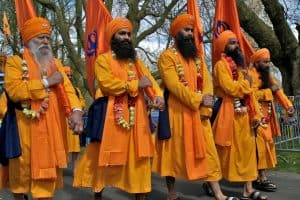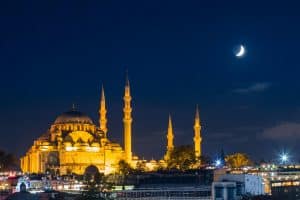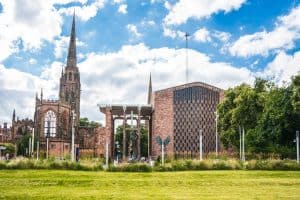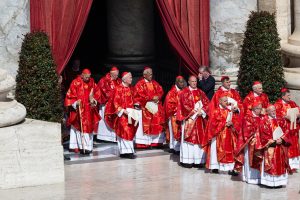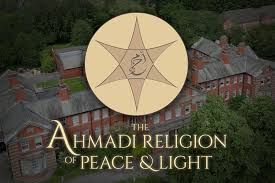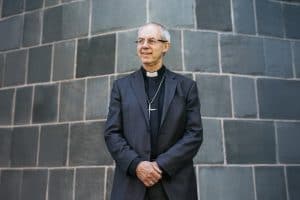by Suzanne Newcombe
Yoga is a practice of breathing, concentration and physical movement traditionally associated with Hinduism. It is growing in popularity around the world and is now practised by as many as 200 million people globally.
What is yoga?
Yoga, which is spreading in popularity across the globe, represents a flexible and multifaceted group of related traditions. Although usually associated with Hinduism, the techniques of yoga have been used by Buddhists, Jains and Sikhs while maintaining their own metaphysical beliefs[1].
Typically, yoga is understood to involve methods of concentration, breathing techniques, physical positions or movements, and ethical guidelines.
More than 200 million people, it has been estimated, participate in “yoga” globally, including more than 100 million in India[2].
In contemporary India, yoga is closely associated with both religious ascetics and the promotion of health and traditional Indian medicine, known as Ayurveda.
In 2016, active yoga practitioners in the United States were estimated to number 36 million people who spend more than $16 billion on classes, clothes and other yoga accessories[3].
In the United Kingdom it has been estimated that there are between and 300,000[4] and 2.5 million[5] practitioners of yoga. Some of the discrepancy in numbers may be between weekly practitioners and those who have ever practised yoga.
Yoga practice is also increasingly to be found in other locations such as Eastern Europe and Russia, South America, Africa, China, Korea and Japan.
Where did Yoga come from?
The earliest evidence of techniques now associated with yoga can be found in the ascetic (śramaṇa) communities, associated with Jainism and Buddhism, in the first millennium BCE.
The philosophical tradition of yoga was traditionally understood as a technique for realising the nature of consciousness (purusha) unfettered by the real empirical world (prakriti) and codified in Patanjali’s Yoga Sutras written between 374 and 425 AD[6].
The first records we have of physical postures now associated with yoga (hatha yoga) were recorded by groups of renunciates in northern India and can be dated to about 1100 AD.[7]
The Haṭha Yoga Project at SOAS University of London is conducting ground-breaking interdisciplinary research into the history of physical practices now associated with yoga.
Yoga was transformed in the modern period through colonial dialogues with medicine, physical culture and Indian nationalism[8].
In Britain, yoga first became popular among middle-class women in publicly funded adult education classes during the 1960s. This context encouraged the development of non-sectarian yoga and certifications for qualified teachers[9].
The use of yoga techniques for health and healing is a subject of research by the AyurYog project based at Vienna University.
What kind of yoga is practised in Britain?
In Britain, the most influential traditions promoting yoga have included the British Wheel of Yoga, a network that certifies and co-ordinates a variety of yoga traditions to a minimum standard of practice. It has been certified by Sports England as the national governing body, offering a high standard of training in its organisation.
Another influential figure was K. S. Iyengar (1918-2014), who trained teachers, or those influenced by them, and accounts for an influential group of teachers in Britain. Iyengar teachers were the only ones permitted to teach in Inner London Educational Authority premises during the 1970s. In this context a standard, global syllabus of posture-focused teaching was developed.
The highly influential Light on Yoga was published in Britain in 1966. From the 1980s, the vigorous sequences known as Ashtanga Vinyasa Yoga taught by Pattabhi Jois (1915-2009) became popular in Britain.
Since the 1990s, many commercial studios offering many different “styles” of yoga have become established. Yoga Alliance Professionals and other organisations now offer insurance and accreditation.
There is a great diversity of teachers, techniques and groups who might be teaching “yoga” in contemporary Britain[10].
Non-commercial yoga also thrives in Britain, often in the context of devotional, “bhakti”, traditions more closely associated with Hinduism or the “post-lineage” tradition of festival culture[11].
Is yoga spiritual, religious or just fitness?
Yoga does not mean the same thing to each of its 200 million practitioners. For some, yoga is primarily a physical exercise offering better health and wellbeing.
For many Indians, yoga represents union with the ultimate reality at the spiritual heart of their religious understandings. Yoga is associated with specific sectarian traditions, as well as secular keep-fit practices.
Why is yoga popular?
The practices associated with yoga are varied and can be adapted to many different contexts, both religious and secular.
The physical exercises associated with yoga can give an experience of concentration, relaxation, “flow”, physical fitness, lung capacity and flexibility, among other attributed physical benefits[12].
The experience of yoga classes can be associated with greater subjective experiences of wellbeing and the development of eudemonic happiness[13].
What is the impact of yoga?
Yoga is not simply a neutral health and wellness practice associated with spirituality. It is also highly political; it is closely associated with the Indian prime minister Narendra Modi’s Hindutva politics and Indian “soft power”.
Many yoga traditions have been implicated in #MeToo scandals and are re-evaluating their ethical procedures. Yoga is known to cause injury; as with any physical activity, it is not entirely safe[14].
Dr Suzanne Newcombe is a lecturer in religious studies at the Open University and a research fellow at Inform
Contacts
Dr Suzanne Newcombe, lecturer in religious studies at the Open University and research fellow at Inform.
Dr Mark Singleton, senior research fellow at SOAS University of London.
Dr Maya Warrier, reader in religious studies, Winchester University.
[1] Mallinson, J. and Singleton, M. (2018) The Roots of Yoga. London: Penguin
[2] Shashi, S. (2019) “Yoga as an industry – learning in 2018 and expectations in 2019”, Economic Times HealthWorld Magazine. Noida, Uttar Pradesh, India
[3] Yoga Journal and Yoga Alliance (2016) “2016 Yoga in America Study Conducted by Yoga Journal and Yoga Alliance”
[4] Jarvis, Alaice-Azania (2014) “Is Modern Yoga Dominated by a Culture of Backbiting?” The Independent, 21 August, and Fox, P. (2017) “Yoga is Big Business”, Yoga Magazine
[5] Carter, M. (2004). “New Poses for Macho Men”. The Times (London), 22 May, Issue 68082: S3, 14
[6] Maas, Philipp (2013). “A Concise Historiography of Classical Yoga Philosophy”, 53–90, in Eli Franco (ed.), Periodization and Historiography of Indian Philosophy. Publications of the De Nobili Research Library, 37. Vienna: Sammlung de Nobili, Institut für Südasien-, Tibet- und Buddhismuskunde der Universität Wie
[7] Mallinson and Singleton 2017: xx–xxi
[8] Singleton, M. (2010) Yoga Body: The Origins of Modern Posture Practice. New York: Oxford University Press
[9] Newcombe, S. (2019) Yoga in Britain: Stretching Spirituality and Educating Yogis. Sheffield: Equinox
[10] ibid
[11] Jacobs, S. and Wildcroft, T. (2017) Podcast: “Hindu Traditions in Contemporary British Communities,” The Religious Studies Project
[12] National Centre for Complementary and Integrative Health (2019), “Yoga: What You Need To Know”, and National Health Service (2018), “A Guide to Yoga”
[13] Ivtzan, I. & Sivaja Jegatheeswaran (2015). The Yoga Boom in Western Society: Practitioners’ Spiritual vs. Physical Intentions and their Impact on Psychological Wellbeing. Yoga & Physical Therapy, 5(3), 1-7
[14] Broad, W. (2012) The Science of Yoga: The Risks and Rewards. New York: Simon & Schuster






